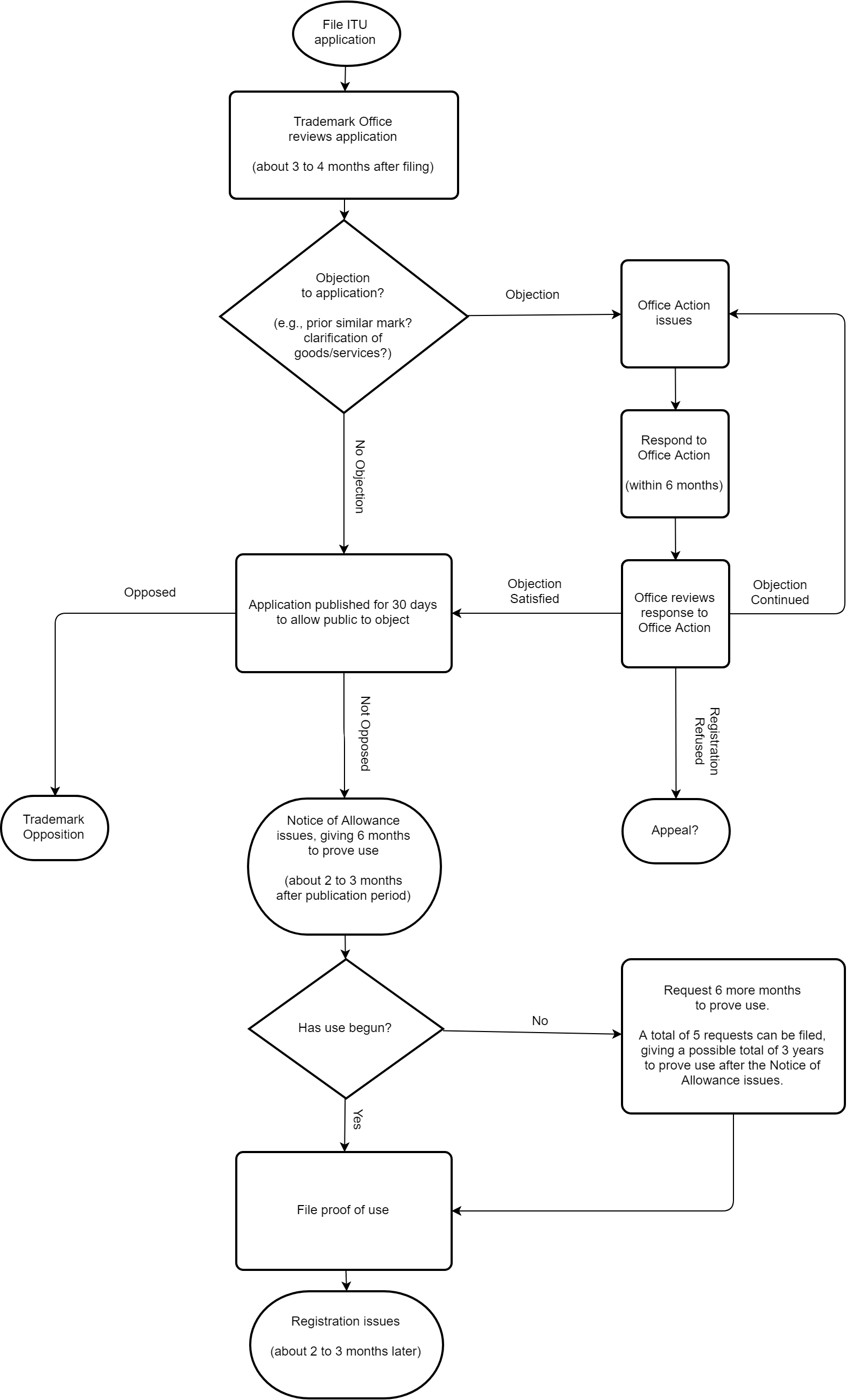Use-Based Applications
To file a use-based application, you must have begun use of your mark in U.S. commerce for all of the goods or services claimed in the application. For goods, use in commerce means that you have already sold or distributed the goods to U.S. consumers with the mark on the goods or on labels or packaging for the goods. For services, use in commerce means that you are already performing the services for U.S. consumers under the mark.
Note that advertising or promoting your goods or services before you are selling or performing them is not use in commerce for application purposes. If you have not begun use in commerce yet, you should consider an intent-to-use application.
Assuming no difficulties, a registration usually issues within 9 to 12 months of filing a use-based application.
Intent-to-Use Applications
An intent-to-use application (“ITU”) is appropriate when you have not yet begun using your mark in U.S. commerce in connection with all of the goods or services to be claimed in your application. Use in U.S. commerce means that you are using the mark now to actively sell or distribute your goods or to actually perform your services in U.S. commerce. Simply advertising or promoting your goods or services before you’ve begun selling goods or performing services does not count as use in commerce.
An ITU allows us to file an application now and prove use in commerce later, giving you some breathing room to develop and launch your product or service without fear that a competitor might scoop the mark before you are able to begin use. An ITU generally costs more overall than a use-based application because more filings are involved, but the peace of mind and competitive advantage could be very valuable.
An ITU is a powerful tool to help protect you from competitors who might adopt the same or a similar mark before you launch. Your trademark rights will extend back to the date you filed the ITU if your ITU ultimately results in a registration. So, if you file an ITU today that results in a registration but do not begin using your mark for another four months, you will have priority of rights over a competitor that starts using the same mark for the same goods or services tomorrow. In other words, that competitor will be infringing your trademark rights, even though the competitor began use before you. On the other hand, if you don’t file the ITU today and your competitor starts use tomorrow, you could be the infringer when you launch.
Assuming no difficulties, a Notice of Allowance (rather than a registration) usually issues within 9 to 12 months of filing an ITU. From there, timing will depend on when you begin using the mark in U.S. commerce. From the date of the Notice of Allowance, you will have six months to prove use. If you haven’t begun use by the end of that six month period, you can request six more months to prove use. You can request a total of five such extensions, assuming you have ongoing business activity to put the mark into use. All told, there are possibly three years to prove use from the date of the Notice of Allowance. Note that there are fees for each request for extension of time.

